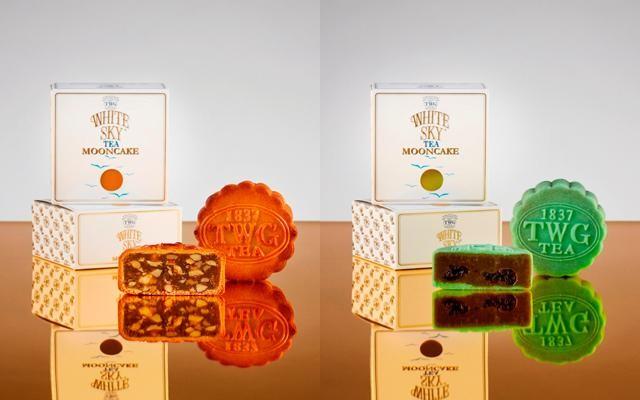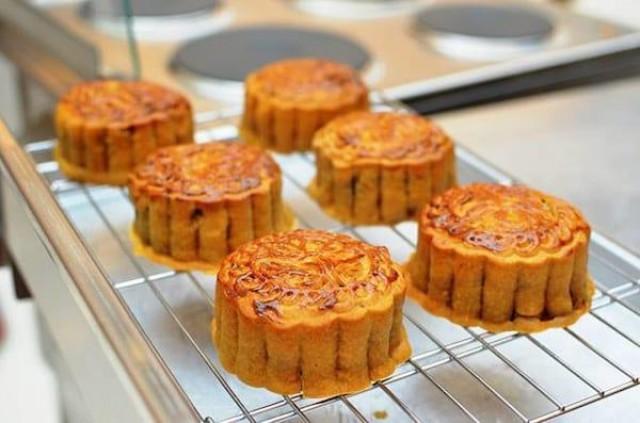5 things to know about the Mooncake Festival
Across the globe, at the tail-end of August, Chinese communities observe a celebration we've come to associate with a rich, round delicacy: mooncakes.
The Mooncake Festival is actually the culmination of the Mid-Autumn Festival, a month-long thanksgiving and celebration. Sharing cakes is part of a long tradition of activities related to the moon, including moon worship and moon gazing. In fact, the Mid-Autumn Festival is known in some parts as the Moon Festival or the Harvest Moon Festival.
Filipino-Chinese Bakery Association, Inc. (FBCAI) president Peter K. Fung during a Pandesal Forum on Tuesday, September 18, explained that the moon is believed to be at its brightest and biggest on the night of the festival.
This year, the public is encouraged to look up to the sky and marvel at the moon on September 24, Monday.
Here's what you need to know about the Mid-Autumn Festival:
1. At the heart of the festival is a love story
The first person who made the first cake for the moon (hence, mooncake) was Hou Yi, who was bequeathed with an elixir of immortality after displaying great skill with his arrow in his fight with nine out of 10 suns (epic, right?).
Yi gave the elixir to his wife Chang'e for safekeeping. An envious apprentice attempted to steal the elixir from Chang'e, so she drank it all and then flew to the moon — the celestial body closest to her husband's home planet. This turned her into the Moon Goddess of Immortality.
Yi, wanting to still show his love for her, would place her favorite fruits and cakes on their yard for her to see.
The former president of the FBCAI, Henry Ah, told the press, "On September 24, if you look at the moon, you will see this beautiful lady. She is why we celebrate the Moon Festival."
2. Where to get the best mooncakes
The festival officially starts on September 22, but mooncakes have been available at the Café Society at the City of Dreams Manila since August 25.
A box of four mooncakes, made with white lotus paste and double egg yolk filling, costs P3, 988 nett. Quite a steep price, but that is why it's meant to be shared.

If you have a smaller group of friends that want to celebrate with before the big event, TWG Tea Salons & Boutiques are offering beautifully packaged tea-infused traditional and snowskin mooncakes, each offered in sets of four at P2,150 and P2588 respectively.
Individual mooncakes, available in eight unique flavors, is priced at P498 (for tea-infused traditional mooncake) and P598 (for tea-infused snowskin mooncake).
These treats available until the even of the festival, September 23, Sunday.

3. Celebrations are different in each country
Moon gazing is one of the more popular activities on the evening of the Mid-Autumn Fesitval, but you can also expect good old dragon dances, a parade of lanterns, and wax burning.
In the Philippines, the game of dice known as Pua Tiong Chiu or Bo Bing is a popular activity.
4. A full experience in one place
For those looking to play Pua Tiong Chiu and win more than bragging rights in their own home, Lucky Chinatown is hosting the Great Dice Game on September 22.
Participants stand a chance to win gift certificates from Belmont and Ramada, Zen Institute and more.
The Great Dice Game is the first major event of the season, which they formally opened on Monday, September 17, with an extensive collection of mooncakes created by chefs from top hotels in one area.

The mall will also host a Moon Fest Mural Contest and cultural performances by students from Chinese schools and other partner organizations. Another highlight is the talent portion of the Mr. and Ms. Chinatown pageant.
5. Give some love to local mooncakes
Here's a secret courtesy of Henry Ah, former president of the FCBAI: "Lotus by this time in China is one of the cheapest products. That's why they make it with lotus. And people think it's so nice to eat, because here it's expensive!"
Instead of lotus, Ah said that the FCBAI is choosing to promote the harvest of your local farmers — ube, cocoa, and even the humble munggo.
It's not a sin to treat yourself to a fancy dinner or tea time with family and friends, but it's good to know that buying expensive cakes is not what the Mid-Autumn Festival is really about.
It's a harvest festival, so be sure to show some love to our local farmers and bakers by supporting their goods and, above all, spend time with friends and family. — LA, GMA News



